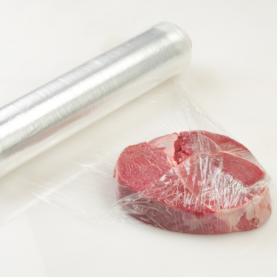Packaging - a communication medium
Nowadays packaging has become a product in its own right. After starting out as a protective skin for food, it has turned into a privileged interface for communication between producers and consumers. It captures our attention, reassures, makes itself useful and its visual elements appeal to consumers and sometimes direct us to online content. The worldwide web significantly extends a product’s outreach, going beyond the mass message carried by the physical object to create an individual relationship between consumers and producers.
Communication interface
In the current age of self-service and hypermarkets, the product relies more than ever on packaging to make its way to the consumer’s shopping basket. Packaging is a real communication interface between consumers and producers. For the latter, it guarantees that the product will be safely delivered and that its message will be carried to consumers, who can meanwhile buy the item and use it as they wish. In this sense, we can speak of packaging as an end product in its own right, providing a service. It must offer added value to its content. The more commonplace the product, the more the packaging has to stand out if it is to be noticed. It must reassure and inform consumers about what it contains and protects, be convenient, eco-friendly, economical and accessible to busy users, while appearing appealing too. Raymond Loewy, a Franco-American industrial designer and author of Never Leave Well Enough Alone (1951), first seriously considered the need to add an aesthetic dimension to packaging as an opportunity to kick-start a market devastated by the economic crisis of 1929.
Aspects of packaging
Packaging follows a structure that organises the discourse it must convey to consumers. In general, it consists of a front, a back and sides or a circumference. The front is called the facing. Its function is to show the brand and to draw attention to a particular aspect of the product which sets it apart from others of the same type. The message must be simple and easy to memorise. The role of the back is to explain and establish a dialogue between the product and the consumer. Formerly very brief, the information on the back has become more comprehensive over the years, due to legal requirements and a concern for clarity as consumers become more and more demanding. For example, it may feature the list of ingredients, nutritive values, quality labels, legal notices, a recipe, etc. The sides or the circumference connect the front and back and repeat the basic information needed to immediately identify the product.
World Wide Web and ‘relational packaging’
Nowadays, Internet is omnipresent and younger generations spontaneously turn to it for all kinds of information. Some producers make use of this interface to continue the dialogue with consumers, especially in the case of small packaging without much room for visual or textual content. The mention of the brand’s website is now a fact, as are references to the social networks that prompt customers to respond. Today, the QR code shortens the distance: you only need to scan it with a smartphone to reveal any additional information the producer wants to provide. It thus enables consumers to make considered choices before even having tasted the contents. The discourse aimed at the masses is transformed into a personal dialogue, from one individual to another. This is known as ‘relational packaging’ (Urvoy, 2012).
A tsunami of references
When shopping, we perceive an average of 250 references per minute, which is equivalent to 7500 different items of packaging in 30 minutes.
LOEWY, Raymond, 1990 (1953). La laideur se vend mal, Paris : Gallimard.
MANZINI, Ezio. Quel avenir pour les emballages. Emballage, emballages, Paris : Cité des sciences et de l’industrie, 2000, pp. 109-126.
URVOY, Jean-Jacques, SANCHEZ-POUSSINEAU, Sophie, LE NAN, Erwan, 2012. Packaging : toutes les étapes du concept au consommateur, Paris : Eyrolles.












